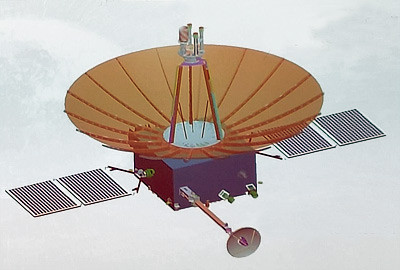BEIJING: China’s Queqiao-2 relay satellite has successfully performed a near-moon braking procedure and entered its circumlunar orbit, the China National Space Administration (CNSA) said on Monday.
At 12:46 am (Beijing Time) on Monday, after approximately 112 flight hours, the satellite began near-moon braking at a distance of about 440 kilometers from the lunar surface and entered its circumlunar orbit smoothly 19 minutes later, the CNSA said.
By adjusting the altitude and inclination of its circumlunar orbit, Queqiao-2 will enter its target elliptical orbit around the moon and carry out a communication test with the Chang’e-4 and Chang’e-6 lunar probes as planned.
Near-moon braking is the most critical orbital control action during lunar satellite flight. A satellite must begin braking when approaching the moon to maintain a speed lower than the moon’s escape velocity so that it can be captured by the moon’s gravitational force and realize circumlunar flight.
Two communication and navigation technology test satellites, Tiandu-1 and Tiandu-2, were sent into space together with Queqiao-2. They also completed near-moon brakes on the same day and entered their circumlunar orbits. The separation of the two satellites will be carried out as planned, the CNSA said.
Queqiao-2, which translates to “magpie bridge 2
Queqiao-2 relay satellite is a second of the two communications relay and radio astronomy satellites designed to support the fourth phase the Chinese Lunar Exploration Program. The China National Space Administration (CNSA) launched the Queqiao-2 relay satellite on 20 March 2024 to a elliptical fro-zen orbit around the Moon to support communications from the far side of the Moon and the Lunar south pole.
The initial phase of the ILRS, consists of the Chang’e 7 and Chang’e 8 probes, i.e., is to be built from 2026 on the southern edge of the South Pole–Aitken basin located on the far side of the Moon. While the Queqiao so far only had to look after two probes on the far side of the Moon (Chang’e 4 lander and Yutu-2 rover), it is assumed that up to ten robots will be active there at the time of ILRS, which requires a complex and sophisticated communication network. –The Daily Mail-China Daily news exchange item





